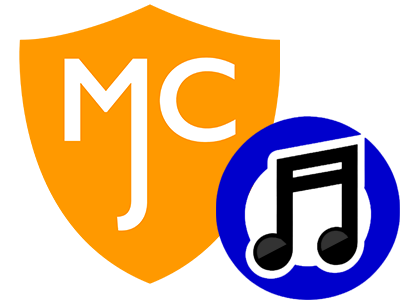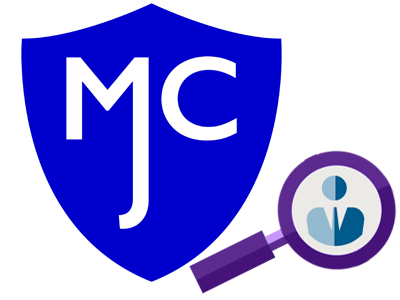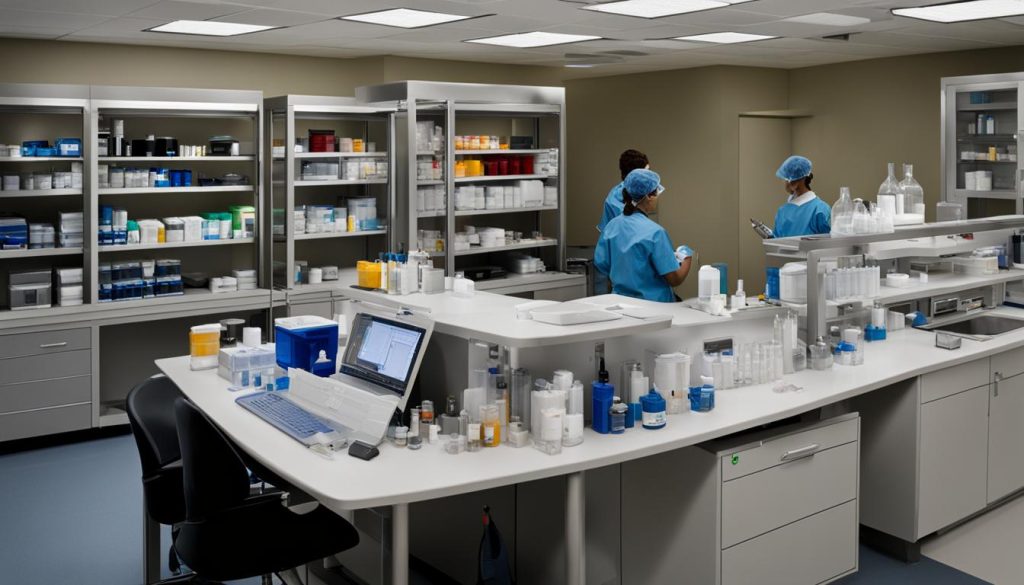
Workplace drug testing is an essential tool in ensuring a drug-free workplace and maintaining the safety and productivity of employees. It involves the detection of alcohol, illicit drugs, or certain prescription drugs in the workplace through various testing methods. Drug testing policies should comply with applicable local, state, and federal laws to ensure accuracy and fairness.
Key Takeaways:
- Workplace drug testing is crucial for maintaining a safe and productive work environment.
- Compliance with local, state, and federal laws is necessary for drug testing programs.
- Drug testing can be done using different types of specimens, such as urine, hair, saliva, or sweat.
- Testing should be conducted in various situations, including pre-employment, for-cause, post-accident, and random testing.
- Ensuring the accuracy of test results is vital, with the involvement of HHS certified laboratories and Medical Review Officers.
The Importance of Drug Testing Compliance
Ensuring compliance with applicable local, state, and federal laws is crucial for any drug testing program in the workplace. Compliance not only demonstrates a commitment to maintaining a safe and drug-free work environment but also protects employers from legal liabilities.
Compliance starts with using the latest Federal Custody and Control Forms (CCF) and following the guidelines established by the Department of Health and Human Services (HHS). These guidelines outline the procedures for collecting, testing, and interpreting drug test results. Employers should also ensure the accuracy of test results by using trained collectors and certified laboratories that adhere to industry best practices.
One key aspect of compliance is maintaining the chain of custody for specimens. This involves securely storing specimens and documenting their handling and transportation from the collection site to the testing laboratory. By following these protocols, employers can have confidence in the integrity of the test results.
| Key Compliance Considerations for Drug Testing Programs |
|---|
| Adherence to local, state, and federal laws |
| Use of the latest Federal Custody and Control Forms (CCF) |
| Following HHS Mandatory Guidelines |
| Utilizing trained collectors and certified laboratories |
| Maintaining the chain of custody for specimens |
By prioritizing compliance, employers can effectively implement drug testing programs that not only meet regulatory requirements but also uphold workplace safety and productivity.
Types of Drug Tests
Drug tests are an essential component of workplace drug testing programs. They help employers detect the presence of drugs in employees’ systems and ensure workplace safety and productivity. Different types of drug tests are used to detect various substances, and the choice of test depends on the employer’s needs and requirements.
Urine Samples
Urine samples are the most commonly used specimens for drug testing. They can detect a wide range of drugs and their metabolites, providing a comprehensive overview of an individual’s drug use. Urine drug tests are relatively easy to administer and have a longer detection window compared to other types of tests. However, they may not be suitable for detecting recent drug use, as drugs can be metabolized and eliminated from the body within a few days.
Hair Samples
Hair drug testing involves collecting a small sample of hair from an individual’s scalp or body. This type of test provides a longer detection window, typically up to 90 days, as drugs are trapped in the hair follicles. Hair drug tests are considered highly accurate and difficult to adulterate. However, they are more expensive and time-consuming than urine tests, and they may not detect recent drug use.
Saliva Samples
Saliva, or oral fluid, drug testing is a non-invasive method that involves collecting a sample of saliva from an individual’s mouth. Saliva drug tests can detect recent drug use, as drugs can be detected in saliva shortly after consumption. They are easy to administer and provide quick results. However, their detection window is relatively short compared to urine and hair tests, typically up to 48 hours.
Sweat Samples
Sweat drug testing, also known as patch testing, involves attaching a sweat patch to an individual’s skin to collect sweat over a specific period. This type of test is primarily used for continuous monitoring and can provide information about long-term drug use. Sweat patch tests are less common than urine, hair, and saliva tests, and they require specialized equipment and training.
Overall, the choice of drug test depends on factors such as the desired detection window, the type of drugs being screened, and the practicality of sample collection. Employers should carefully consider their needs and consult with experts to determine the most appropriate drug testing methods for their workplace.
When to Conduct Drug Tests
Drug testing plays a crucial role in maintaining a safe and productive workplace. Employers may choose to conduct drug tests in various situations to ensure that employees are fit for duty and to deter drug use. Here are the different scenarios in which drug tests may be conducted:
1. Pre-Employment Testing
Pre-employment drug testing is commonly used as a condition of employment for all job candidates. It helps employers ensure that prospective employees are drug-free and capable of performing their duties safely and effectively.
2. Annual Physical Tests
Some employers include drug testing as part of annual physical examinations. This helps identify any potential drug use among employees and allows for early intervention if needed. It is important to provide prior notification to employees about the drug testing component of the annual physical tests.
3. For-Cause Testing
For-cause testing is conducted when employees exhibit signs of being unfit for duty or engage in a pattern of unsafe behavior. Common signs may include impaired coordination, erratic behavior, or excessive absenteeism. This type of testing helps identify potential drug use that may pose risks to workplace safety.
4. Post-Accident Testing
Post-accident testing is conducted for employees involved in workplace accidents or incidents that could have been caused by drug use. This type of testing helps determine if drug use was a contributing factor and allows employers to take appropriate action to prevent similar incidents in the future.
5. Post-Treatment Testing
Employees who have completed a drug rehabilitation program may be required to undergo post-treatment testing to ensure their continued sobriety and ability to perform their job duties safely. This testing helps support employees’ successful recovery and promotes a drug-free workplace.
6. Random Testing
Random drug testing involves selecting employees for testing on an unpredictable basis. This type of testing serves as a powerful deterrent for drug use, as employees are aware that they may be tested at any time. Random testing helps ensure the ongoing enforcement of drug-free workplace policies.
By conducting drug tests in these various scenarios, employers can maintain a drug-free workplace, mitigate safety risks, and promote the overall well-being and productivity of their employees.
Ensuring Accuracy of Test Results
Ensuring the accuracy of drug test results is of utmost importance in maintaining the integrity and effectiveness of workplace drug testing programs. To achieve this, it is crucial to rely on the expertise of an HHS certified laboratory and the oversight of a qualified Medical Review Officer (MRO).
An HHS certified laboratory meets strict standards and follows standardized testing procedures to ensure the accuracy and reliability of drug test results. These laboratories are equipped with state-of-the-art technologies and employ highly trained professionals who adhere to specific protocols for sample collection, testing, and result reporting. By utilizing an HHS certified laboratory, employers can have confidence in the validity of the test results.
The role of the Medical Review Officer (MRO) is equally crucial in ensuring accuracy. MROs are licensed physicians who specialize in the interpretation of drug test results. They meticulously review the laboratory findings, taking into account an employee’s medical history, prescription medications, and other relevant information. MROs play a vital role in verifying drug test results, addressing any potential false positives or negatives, and ensuring a fair and accurate outcome.
| Importance of Ensuring Accuracy of Test Results | Benefits |
|---|---|
| 1. Compliance with regulations: Accurate test results ensure compliance with local, state, and federal laws governing workplace drug testing programs. | Minimize legal risks and maintain the reputation of the organization. |
| 2. Employee trust and confidence: Accurate results foster trust among employees, assuring them that the testing process is fair and reliable. | Promote a positive work environment and employee morale. |
| 3. Identifying substance abuse issues: Accurate test results help identify employees with substance abuse problems, allowing for appropriate intervention and support. | Enable early intervention and reduce the potential negative impact on productivity and safety. |
It is important to note that while drug test results aim to provide an objective assessment of an employee’s drug use, they are not infallible. Factors such as the sensitivity of testing methods, human error, and limitations in detecting certain substances can impact the accuracy of results. In cases where an employee disputes a positive test result, they may have the right to request a second test at a different HHS-certified laboratory, further ensuring the integrity of the testing process.
The Dangers of Marijuana in the Workplace
Studies have shown that marijuana use in the workplace poses significant risks to workplace safety. The psychoactive compound in marijuana, delta-9 THC, can have various physical and mental effects on individuals, impairing their body movement and cognitive function. In high doses, it can even cause hallucinations and delusions. A Canadian study found that cannabis users have a significantly higher risk of on-the-job injuries compared to non-users. These findings highlight the importance of addressing the dangers of marijuana in the workplace through effective drug testing programs.
Marijuana use not only affects the individual’s performance but also has broader implications for workplace safety. Impaired coordination and judgment can lead to accidents and injuries, posing risks not only to the user but also to their colleagues. Furthermore, the use of marijuana has been linked to mental health issues, such as psychosis, which can have a negative impact on an individual’s overall well-being and ability to function effectively in the workplace. These potential risks underscore the need for employers to implement robust drug testing policies to maintain a safe and productive work environment.
To further emphasize the importance of addressing marijuana use in the workplace, it is crucial to educate employees about the potential effects of marijuana on their performance and workplace safety. By raising awareness about the risks associated with marijuana use, employers can encourage responsible behavior and deter employees from engaging in drug consumption. Implementing regular drug testing programs can serve as a preventive measure and provide a clear message that drug use will not be tolerated in the workplace. By prioritizing workplace safety and addressing the dangers of marijuana, employers can create a productive environment where employees can thrive.
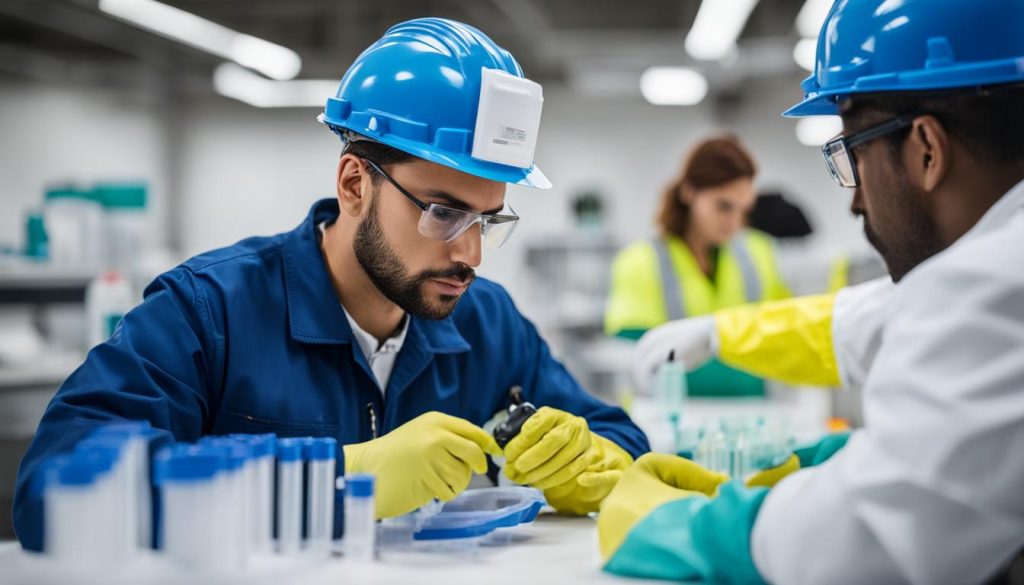
Increasing Positivity Rates and the Need for Drug Testing
Workplace drug testing is becoming increasingly important in light of the rising positivity rates for marijuana use in the general U.S. workforce. According to the Quest Diagnostics Drug Testing Index, the positivity rate for marijuana in 2021 was the highest in 20 years. This trend raises concerns about workplace safety and highlights the need for effective drug testing programs.
With the acceptance and legalization of marijuana in many states, there is a growing perception that its use is harmless. However, studies have shown that marijuana use can impair cognitive function, physical coordination, and judgment, posing risks to workplace safety. The psychoactive compound in marijuana, delta-9 THC, can have a significant impact on an individual’s ability to perform tasks safely and efficiently.
Detecting and deterring marijuana use through drug testing programs is crucial for maintaining a safe and productive work environment. Drug testing can identify employees who may be under the influence of drugs and help prevent accidents, injuries, and potential liability issues. By implementing comprehensive drug testing programs, employers can mitigate the risks associated with marijuana use and ensure the well-being of their employees.
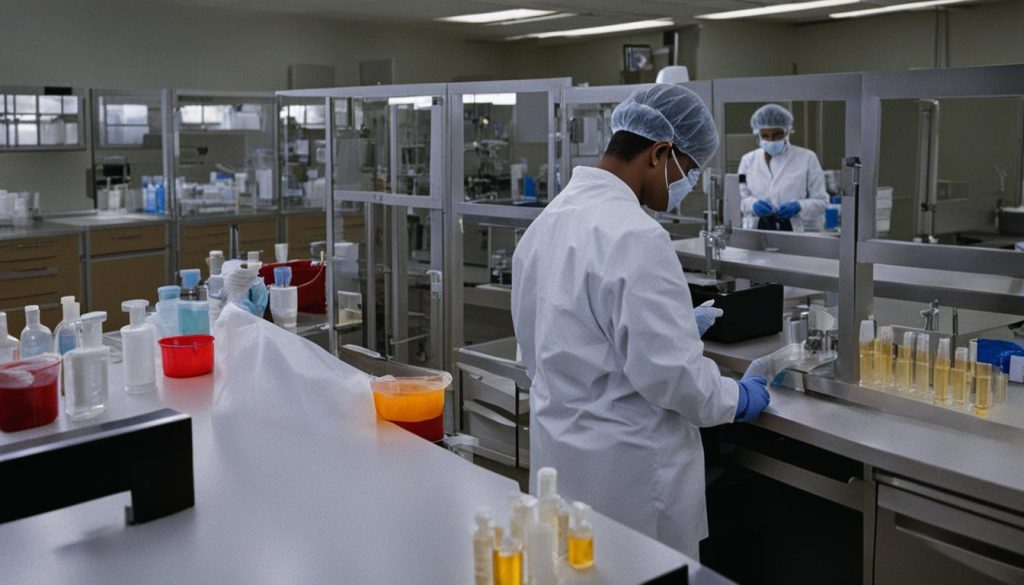
The Efficacy of Drug Testing Programs
Drug testing programs have been shown to be effective in reducing workplace drug use. A study published in the Journal of Occupational and Environmental Medicine found that companies with strong drug testing programs experienced lower rates of positive drug tests and fewer workplace accidents compared to companies with no or less stringent testing policies.
| Study Findings | Positive Outcomes |
|---|---|
| Companies with drug testing programs had 56% fewer positive drug tests than those without. | Reduced drug use in the workplace. |
| Companies with drug testing programs had 51% fewer workplace accidents than those without. | Improved workplace safety. |
Implementing drug testing programs can be an effective strategy for employers to deter drug use and maintain a safe and productive work environment. It serves as a preventive measure to identify employees who may be under the influence of drugs and take appropriate action to ensure workplace safety.
While some argue that drug testing programs may infringe on employees’ privacy, the need for workplace safety and productivity outweighs these concerns. By promoting a drug-free environment, employers can protect their employees, customers, and the general public from the potential risks associated with drug use in the workplace.
The Impact of Drug Testing Programs on Productivity
When it comes to workplace drug testing programs, evaluating their impact on productivity is a key consideration. While there have been few systematic studies in this area, the existing literature suggests a relationship between drug testing programs and improved productivity indicators. Studies have shown that employees who are subjected to drug testing are more likely to exhibit positive attitudes towards workplace safety and drug-free environments. This, in turn, can contribute to increased productivity levels.
Worker attitudes also play a significant role in the effectiveness of drug testing programs. When employees perceive drug testing as a fair and necessary practice, they are more likely to uphold workplace safety standards and abide by company policies. On the other hand, negative attitudes towards drug testing can lead to decreased morale and a potential decline in productivity.
To fully assess the impact of drug testing programs on productivity, evaluation studies are essential. These studies should consider a range of factors, including the specific characteristics of the workforce, the nature of the industry, and the overall organizational culture. By conducting comprehensive evaluation studies, employers can gain insights into the effectiveness of their drug testing programs and make informed decisions to enhance productivity in the workplace.
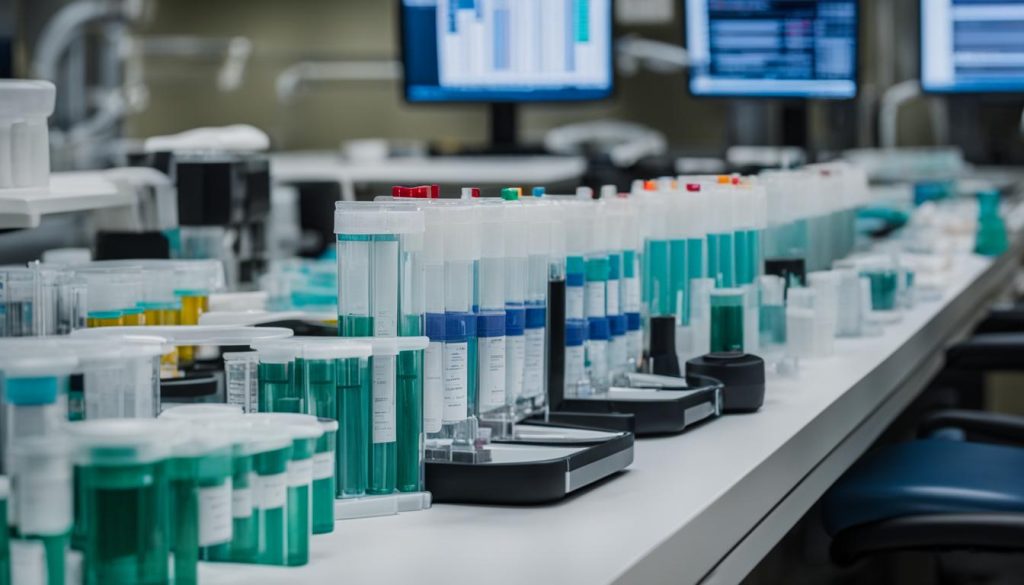
The Role of Evaluation Studies
Evaluation studies are crucial for understanding the impact of drug testing programs on productivity. These studies involve the collection and analysis of data to determine the effectiveness of the programs and identify areas for improvement. By evaluating the outcomes of drug testing programs, organizations can identify trends, patterns, and potential barriers that may affect productivity levels.
| Benefits of Evaluation Studies | Limitations of Evaluation Studies |
|---|---|
|
|
“Evaluation studies provide valuable insights into the effectiveness of drug testing programs and help organizations make informed decisions to enhance productivity in the workplace.”
By considering the benefits and limitations of evaluation studies, organizations can develop comprehensive strategies to evaluate the impact of their drug testing programs on productivity. This allows them to continuously improve their programs, address any emerging challenges, and create a safer and more productive work environment.
Types and Uses of Drug Testing Programs
In this section, we will explore the different types of drug testing programs commonly used in the workplace. By understanding the various approaches to drug testing, employers can make informed decisions on which program best suits their needs.
Preemployment Testing
Preemployment testing is the most prevalent form of drug testing and is often conducted as a condition of employment. This type of testing ensures that prospective employees are drug-free before joining the organization. Preemployment testing helps create a safe and productive work environment by deterring drug use and preventing potential risks.
Incident-Driven Testing
Incident-driven or for-cause testing is conducted in response to specific incidents or behaviors that raise concerns about an employee’s fitness for duty. This type of testing is typically performed when there is reasonable suspicion of drug use based on observable signs or performance issues. Incident-driven testing helps address immediate concerns and allows employers to take appropriate actions to maintain workplace safety.
Postemployment Testing
Postemployment testing, also known as random testing, is conducted without specific cause or suspicion. It is typically carried out on a random basis or targeted towards sensitive positions where drug use may pose a higher risk. Postemployment testing helps reinforce a drug-free workplace culture and serves as an ongoing deterrent for drug use among employees.
By implementing these different types of drug testing programs, employers can promote a drug-free workplace, ensure employee safety, and maintain productivity. While each program has its own advantages and considerations, it is crucial for employers to carefully evaluate which approach aligns best with their organizational goals and values.
Legal and Social Considerations of Workplace Drug Testing
When implementing workplace drug testing programs, it is crucial to consider the legal restrictions and social implications associated with such initiatives. From a legal perspective, drug testing programs must comply with state and federal constitutional limitations. This ensures that the rights and privacy of employees are protected throughout the testing process. By adhering to these legal restrictions, employers can create a fair and transparent drug testing policy that promotes a drug-free workplace while upholding individual rights.
“The implementation of workplace drug testing programs should strike a balance between maintaining safety and respecting individual privacy rights.”
From a public health perspective, drug testing programs can contribute to broader efforts in drug intervention and prevention. By identifying employees who may be struggling with substance abuse, organizations can provide the necessary support and resources to help them overcome their challenges. Additionally, drug testing programs serve as a deterrent, discouraging employees from using drugs in the first place. This proactive approach promotes overall employee well-being and can lead to a healthier and more productive workforce.
However, it is important to acknowledge that implementing drug testing programs may have social costs. Critics argue that such programs can stigmatize individuals who are in need of assistance, making them unemployable and exacerbating existing societal issues. Therefore, it is essential to carefully evaluate the potential social consequences and consider complementary measures, such as education and support programs, to address the underlying causes of substance abuse.
| Legal Considerations | Public Health Perspective | Social Costs |
|---|---|---|
| Compliance with state and federal laws | Identification of employees in need of assistance | Potential stigmatization and unemployability |
| Protection of individual rights | Deterrence of drug use | Exacerbation of societal issues |
In conclusion, workplace drug testing programs must navigate legal restrictions while considering public health perspectives and potential social costs. By adopting a comprehensive approach that includes education, support, and intervention, employers can create a safe and productive workplace environment while minimizing the negative impacts associated with drug testing programs.
The Potential Benefits and Limitations of Workplace Drug Testing
Workplace drug testing programs have the potential to provide extensive social benefits by promoting a drug-free environment and ensuring workplace safety. By detecting the presence of alcohol, illicit drugs, or certain prescription drugs in the workplace, drug testing serves as a deterrent for drug use and encourages employees to remain drug-free. It helps create a culture of accountability and responsibility, reinforcing the message that drug use is not tolerated in the workplace.
Table: Potential Benefits of Workplace Drug Testing
| Benefits | Description |
|---|---|
| Enhanced workplace safety | Reduces the risk of accidents, injuries, and fatalities caused by impairment on the job. |
| Increased productivity | Reduces absenteeism, tardiness, and decreases in overall productivity caused by drug use. |
| Improved employee morale | Creates a sense of fairness and equality among employees, fostering a positive work culture. |
| Protection against liability | Minimizes legal and financial risks associated with drug-related incidents in the workplace. |
Despite their benefits, workplace drug testing programs also have limitations that employers should consider. The cost of implementing and maintaining drug testing programs can be substantial, including the expenses associated with testing kits, laboratory analysis, and training for staff involved in the testing process. Additionally, privacy concerns may arise, as drug testing often involves the collection of personal and sensitive information from employees. Striking a balance between maintaining a drug-free workplace and respecting individual privacy rights is crucial.
Interpreting drug test results accurately can also be challenging. While drug testing can detect the presence of drugs, it does not provide insights into the timing or context of drug use. This means that a positive drug test result may not necessarily indicate impairment or recent drug use. Employers should consider implementing policies and procedures to address false positive results, confirmatory testing, and the rights of employees to challenge and dispute test results. Open communication and transparency are essential in maintaining the trust and confidence of employees in the drug testing process.
Ultimately, employers must carefully evaluate the potential benefits and limitations of workplace drug testing programs before implementing them. It is important to strike a balance between promoting a drug-free workplace and considering the costs, privacy concerns, and challenges associated with drug testing. By adopting a comprehensive approach that includes education, prevention, and support for employees struggling with substance abuse, employers can create a safer, healthier, and more productive work environment.
Conclusion
Workplace drug testing is a critical aspect of ensuring workplace safety and productivity. While some advocate for strict drug testing policies, we take a more lenient position that acknowledges the complexity of the issue.
It is essential to comply with applicable laws and regulations when implementing a drug testing program. This includes using certified laboratories and following proper protocols to ensure the accuracy of test results.
While workplace drug testing can help deter drug use and maintain a drug-free environment, it is important to consider other factors as well. A comprehensive approach that includes education, prevention, and support for employees struggling with substance abuse is crucial. By addressing the root causes of drug use and providing the necessary resources, we can create a workplace that promotes both safety and productivity.
FAQ
Why is workplace drug testing necessary?
Workplace drug testing is necessary to ensure workplace safety and productivity by detecting the presence of alcohol, illicit drugs, or certain prescription drugs in the workplace.
What laws should drug testing programs comply with?
Drug testing programs should comply with applicable local, state, and federal laws.
What types of drug tests are commonly used?
Commonly used drug tests include urine, hair, saliva (oral fluid), and sweat tests.
When should drug tests be conducted?
Drug tests can be conducted during pre-employment, annual physical exams, for-cause situations, post-accidents, post-treatment, and randomly.
How can the accuracy of drug test results be ensured?
Ensuring accuracy involves using HHS certified laboratories, trained collectors, Medical Review Officers (MROs), and maintaining the chain of custody for specimens.
What are the dangers of marijuana in the workplace?
Marijuana use in the workplace can impair body movement, cognitive function, and may lead to hallucinations, delusions, and increased risk of on-the-job injuries.
Are positivity rates for marijuana increasing?
Yes, positivity rates for marijuana in the general U.S. workforce have been steadily increasing, with 2021 having the highest rate in 20 years.
What is the impact of drug testing programs on productivity?
While more research is needed, some studies suggest a relationship between drug testing programs and improved productivity indicators.
What are the types and uses of drug testing programs?
Drug testing programs can be categorized into preemployment testing, incident-driven testing, and postemployment testing without specific cause.
What are the legal and social considerations of drug testing programs?
Drug testing programs must comply with legal restrictions, and there are public health and social considerations to be taken into account.
What are the potential benefits and limitations of workplace drug testing?
Workplace drug testing can promote a drug-free environment, ensure safety, and serve as a deterrent. However, there are limitations such as cost, privacy concerns, and accurate interpretation of results.










